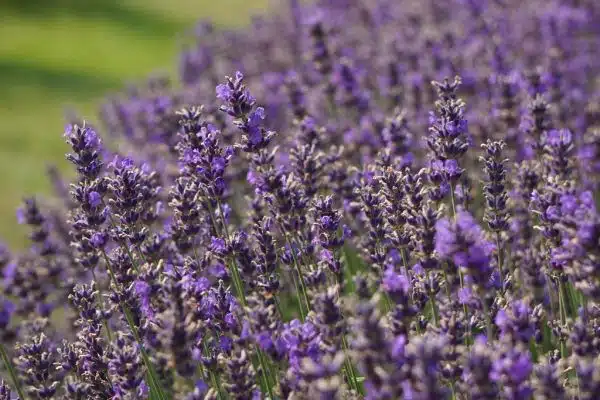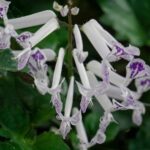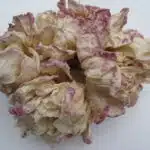Lavender plants are a popular and versatile addition to any garden. These fragrant plants not only provide aesthetic appeal, but they also have medicinal properties that make them useful in many different ways. However, in order to maintain healthy and vibrant lavender plants, it is important to prune them regularly throughout the year. Proper pruning techniques will ensure that your lavender plants continue to thrive and produce beautiful blooms.
Pruning lavender plants can be a daunting task for many gardeners, especially if they are unsure of when and how to prune their plant. However, with a little knowledge and practice, anyone can become an expert at pruning these lovely herbs. This article will provide you with all the information you need to know about pruning lavender plants in every season. From understanding the benefits of pruning, to knowing exactly when and how to trim your lavender plant for optimal growth, this comprehensive guide will help you keep your lavender looking its best all year long.
Understanding The Benefits Of Regular Pruning
Pruning is an essential task for maintaining the health and beauty of lavender plants. Regular pruning can provide numerous benefits, such as encouraging new growth, preventing disease, improving air circulation, and enhancing the plant’s overall appearance. By removing dead or damaged branches, you can prevent insects and disease from spreading further into the plant. Moreover, pruning helps to shape the plant and stimulate the production of more flowers.
To achieve optimal results when pruning lavender plants, it is crucial to understand various techniques that can be used. One of the most effective methods is called “deadheading,” which involves cutting off spent flower heads. This technique can promote additional blooming while also preventing seed production that may divert energy from growing new foliage. Another technique involves cutting back one-third of the plant’s total height in early spring to encourage bushier growth and a fuller appearance.
Pruning lavender plants at different times throughout the year can yield different benefits. For example, pruning in late winter or early spring can help remove any winter damage and prepare the plant for new growth. Pruning in mid-summer after flowering has ended will encourage a second flush of blooms in late summer or early fall. Therefore, understanding how to prune lavender plants properly based on seasonal changes is critical for achieving successful results. As we move forward with this guide, we will explore some of the essential tools needed for proper pruning techniques.
Tools Needed For Pruning Lavender Plants
To properly prune lavender plants, one must have access to the correct tools. Pruning shears are essential for a clean and precise cut, while long-handled pruning loppers can provide extra leverage to cut through thicker branches. A pruning saw is also useful for larger cuts, and garden gloves can protect hands from any sharp edges or thorns. Lastly, disinfecting the tools in between plants is important to prevent the spread of any potential diseases.
Different types of lavender require different maintenance techniques; however, pruning is generally done in every season to maintain the plant’s shape and promote new growth. Pruning also prevents woody growth and encourages more flowers. For instance, English lavender should be pruned in late summer after flowering has finished, while French lavender should be pruned back by one-third in spring after the last frost.
To ensure optimal plant health and growth, it is crucial to use the proper tools and techniques for maintaining lavender plants. By investing in quality pruning shears, loppers, saws, and gloves, gardeners can effectively care for their plants without causing unnecessary damage. Additionally, understanding the specific needs of each type of lavender will assist gardeners in achieving their desired results.
Spring Pruning Techniques
After gathering all the necessary tools for pruning lavender plants, it is essential to understand when and how frequently to prune them. Lavender plants require regular pruning to maintain their shape, size, and health. The frequency of pruning depends on the type of lavender you have and its growth rate.
Spring is an ideal time to prune lavender plants as it is the beginning of a new growing season. It is crucial to prune before new growth emerges to prevent damage to fresh shoots. Spring pruning techniques include removing dead or damaged parts, cutting back woody stems by one-third of their length, and reducing the overall size of the plant. Additionally, spring fertilization can promote healthy new growth after pruning.
Pruning frequency varies depending on the desired appearance and health of your lavender plant. With proper spring pruning techniques and regular maintenance throughout the year, your lavender plant will thrive for years to come. In the next section, we will discuss effective summer pruning techniques that will help you maintain your plant’s health during the hot months.
Summer Pruning Techniques
Imagine walking through a beautiful garden filled with lavender plants. The fragrance is intoxicating, and the sight of the purple flowers is simply mesmerizing. You may wonder how these plants are kept so healthy and vibrant. One of the essential techniques to achieve this is pruning, which can be done in every season. In summer, it is crucial to prune your lavender plants to maintain their health and beauty.
Pruning frequency is an important factor to consider when taking care of your lavender plants. In general, pruning should be done at least once a year, preferably during the late winter or early spring season. However, summertime pruning can also be beneficial for your plants since it promotes bushier growth and prevents woody stems from developing.
Timing for pruning lavender in summer is critical because you want to avoid cutting back too much of the plant’s foliage during hot weather. This can cause stress and make it difficult for your plant to recover properly. It’s best to wait until after the first flush of blooms has finished before starting pruning activities. This will ensure that you’re not cutting off any potential flowers that may still develop later in the season.
As we move towards fall, it’s time to start thinking about preparing our lavender plants for the colder months ahead. Fall pruning techniques are essential for maintaining the overall health and appearance of your plants throughout winter. By following proper pruning methods, you can help prevent diseases from taking hold while also ensuring that your lavender continues to thrive next year.
Fall Pruning Techniques
Summer pruning techniques are vital to keep your lavender plants in good shape. However, fall pruning is also an essential part of taking care of your lavender plants. Fall is the perfect time to prepare your lavender plants for winter dormancy.
Fall pruning involves removing dead flowers and cutting back any branches that have grown too tall or leggy during the summer months. Doing so will help prevent snow and ice from weighing down and breaking the branches during winter. Fall pruning also allows for better air circulation around the plant, reducing the risk of fungal diseases.
Along with fall pruning, it’s also important to fertilize your lavender plants before winter dormancy. A balanced fertilizer application helps promote root growth, which is especially important before winter sets in. This way, when spring rolls around again, your lavender plants will be ready to start growing again from healthy roots.
As fall turns into winter, it’s time to start thinking about winter pruning techniques for your lavender plants. Winter pruning should be done at a minimum, only removing any damaged or diseased branches. Over-pruning in the winter can cause more harm than good as it can stimulate new growth that won’t survive the cold weather. It’s best to wait until spring when you can see how much damage has occurred over the winter months before deciding how much pruning is necessary.
Winter Pruning Techniques
To ensure the health and longevity of lavender plants during winter, it is essential to provide proper winter care. Winter care not only protects the plants from harsh weather conditions but also helps them to thrive in the spring season. A few essential winter care practices for lavender plants include mulching, watering, and frost protection.
Mulching is one of the most critical steps in winter care for lavender plants. It helps to maintain soil moisture and temperature during cold weather. The best time to apply mulch is before the first frost when the soil is still warm. Use a layer of 2-3 inches of organic mulch such as straw or leaves around the base of your plant.
Watering is another crucial aspect of winter care for lavender plants. Although lavender requires little water, it is vital to keep the soil slightly moist throughout winter. Watering should be done early in the day so that excess moisture can evaporate before nightfall. Avoid overwatering as it can lead to root rot.
Frost protection is an essential aspect of winter care for lavender plants, especially if you live in areas with extreme temperatures. One way to protect your plant from frost damage is by covering it with a cloth or blanket overnight. You can also use a commercial frost cloth that is specially designed for this purpose.
Winter care practices such as mulching, watering, and frost protection are crucial for maintaining healthy lavender plants during cold weather. These practices help prevent damage caused by freezing temperatures and ensure that your plant thrives come springtime. In the next section, we will discuss pruning techniques specifically aimed at controlling size and shape for your lavender plant’s optimal growth potential.
Pruning For Shape And Size Control
Winter pruning techniques are important for maintaining the health of your lavender plants. However, it is equally essential to prune your plants in other seasons as well. Pruning frequency for lavender plants depends on the desired outcome and the specific cultivar.
To maintain a compact and attractive shape, shaping techniques can be employed while pruning. This involves removing any growth that is not in line with the desired shape or size of the plant. In addition, cutting back stems that have already flowered can encourage new growth and promote a more robust blooming season.
Deadheading is another important aspect of lavender plant care that can enhance blooming. Deadheading involves removing spent flowers from the plant after they have finished blooming. This process redirects energy into new growth and encourages additional blooms throughout the growing season. By regularly deadheading your lavender plants, you will ensure they look their best and continue to thrive year after year.
Deadheading For Blooming Enhancement
Did you know that deadheading can increase the blooming of your lavender plants by up to 30%? Deadheading refers to the removal of spent flowers from a plant, and it encourages new growth and prolongs the blooming season. For lavender plants, this means more fragrant blooms for you to enjoy. However, deadheading should not be confused with pruning.
Deadheading is a simple process that can be done throughout the growing season. As soon as a flower has wilted, use a sharp pair of shears or scissors to cut it off at its base. This will prevent the plant from using energy to produce seeds and instead encourage it to redirect its resources towards producing new blooms. Deadheading frequency varies depending on how often your lavender plants bloom, but generally, once a week is sufficient.
The best time to deadhead your lavender plants is in the morning when they are well-hydrated but have not yet been exposed to strong sunlight. This will minimize stress on the plant and reduce the risk of wilting or damage. Remember that while deadheading is an effective way to enhance blooming, proper pruning is also essential for overall plant health and longevity. In the next section, we will discuss how pruning for better air circulation can benefit your lavender plants even further.
Pruning For Better Air Circulation
The importance of air circulation in lavender plants cannot be overstated. Good air flow can prevent fungal diseases and other problems that arise from stagnant moisture. Without good air circulation, a plant is more susceptible to pests and diseases that thrive in humid environments. Proper pruning techniques are essential for promoting air flow around your lavender plants.
One technique for promoting air flow is known as selective pruning. This involves removing only the parts of the plant that are dead or damaged. By doing so, you allow the remaining parts of the plant to receive adequate sunlight and promote healthy growth. Additionally, selective pruning can help to remove any diseased or infested areas of the plant before they spread.
Another technique for promoting air flow is thinning out the middle of the plant. This technique involves removing some of the inner branches to create space between each stem. Doing so allows for better light penetration and increased airflow throughout the plant, which in turn promotes overall health and vigor. Thinning out can also help to reduce overcrowding within a plant, making it easier for gardeners to spot potential pest or disease problems early on.
Promoting good air circulation is essential when growing lavender plants. Selective pruning and thinning out are two effective techniques that can help gardeners achieve this goal. In our next section, we will discuss how pruning can be used for pest and disease control without compromising overall plant health and wellness.
Pruning For Pest And Disease Control
Anticipated objection: Some may argue that pruning alone is not enough to prevent pests and diseases from affecting lavender plants. However, while it is true that there are other prevention methods to consider, such as proper soil drainage and regular cleaning of garden tools, pruning plays a crucial role in maintaining the health of lavender plants.
One natural remedy for pest and disease control is using companion planting. This involves planting other species alongside lavender that repel pests or attract beneficial insects. For example, planting marigolds or chrysanthemums near lavender can help deter aphids and whiteflies. Similarly, herbs like rosemary or thyme can attract bees and other pollinators that aid in the growth of lavender.
Another effective method for pest control is spraying a mixture of water and essential oils onto the foliage of lavender plants. Oils like neem oil or peppermint oil act as repellents against insects like spider mites and caterpillars. These natural remedies are safe to use on edible herbs like lavender, making them a preferred choice for many gardeners who opt for organic gardening practices.
Transition: Now that we have discussed ways to prevent pests and diseases from affecting our beloved lavender plants naturally, let us move on to another important aspect of pruning – improving their fragrance.
Pruning For Improved Fragrance
One of the main reasons why people grow lavender is because of its wonderful scent. To maximize this fragrance potency, pruning is an essential technique that should be done regularly. Pruning involves cutting back some parts of the plant, which encourages the growth of new shoots and flowers. However, it is important to know the right timing for pruning to avoid damaging your plants.
The best time to prune lavender plants depends on several factors such as climate, weather conditions, and the variety of lavender you are growing. For instance, in colder regions where frost can occur, it is recommended to prune after winter when there is no danger of frost damage. On the other hand, in warmer climates where lavender can grow year-round, pruning can be done twice a year – once after flowering in spring and another one in late summer or early fall.
To help you determine the right pruning timing for your lavender plants, refer to this table:
| Lavender Variety | Best Time to Prune |
|---|---|
| English Lavender | Late Summer/Early Fall |
| French Lavender | After Flowering in Spring |
| Spanish Lavender | After Flowering in Spring |
Pruning at the appropriate time not only helps improve fragrance potency but also promotes healthier growth by removing dead wood and preventing diseases from spreading. With proper care and maintenance through regular pruning, your lavender plants will thrive and continue to provide fragrant blooms for years to come.
Transition: Now that we have covered how pruning can improve fragrance potency let’s move on to discussing how you can prune your lavender plants specifically for harvesting purposes.
Pruning For Harvesting Lavender
- Lavender is a plant that requires regular pruning to ensure optimal growth and healthy harvest.
- Pruning techniques should be adapted depending on the season and the desired result, such as shaping, deadheading, and harvesting.
- When harvesting lavender, it is important to consider the time of the year and the length of the stem when cutting, as the essential oils are concentrated in the flowers.
- Pruning for harvesting lavender should be done with sharp tools that have been sterilized to reduce the risk of spreading disease and pests.
Harvesting Tips
As a horticulture specialist, it is essential to understand the proper harvesting techniques for lavender plants. Harvesting at the right time and in the right manner will ensure that you get the best quality lavender flowers. When pruning for harvesting, you should aim to cut the stems when about half of the flowers on each stem have opened. This timing ensures that you get a good balance between fragrance and oil production.
Another important factor to consider when harvesting lavender is drying. After cutting, it is crucial to dry your lavender correctly to preserve its fragrance and color. The first step in drying lavender is sorting out any damaged or diseased stems. Once you have sorted them out, tie your stems into small bunches and hang them upside down in a warm, dark room with good air circulation. You can also use a dehydrator to speed up the process.
In conclusion, harvesting and drying are critical factors that determine the quality of your lavender flowers. By following these simple tips for pruning and drying, you can be sure that you’ll have high-quality, fragrant blossoms for use in sachets, potpourri blends, or culinary purposes throughout the year. So go ahead and prune those lavender plants today!
Pruning Techniques
As a horticulture specialist, it is essential to understand the proper pruning techniques for lavender plants. Pruning is necessary not only for shaping and maintaining the plant’s size but also for promoting better growth and higher quality flower production. Pruning frequency will depend on the cultivar, climate, and growing conditions of your lavender plants. However, generally speaking, you should prune your plants annually to keep them healthy and looking good.
When pruning your lavender plants, you should aim to remove at least one-third of the previous year’s growth while leaving some green leaves on each stem. This method promotes new growth while preventing the plant from becoming too woody. Pruning depth is another critical factor to consider as cutting too deep can lead to damage or even killing your lavender plant. Instead, use sharp pruning shears to make clean cuts just above a node or bud.
By following proper pruning techniques, you can ensure that your lavender plants stay healthy and produce high-quality flowers year after year. Regular pruning encourages better air circulation and sunlight penetration, which helps prevent disease and pests from affecting your plants. It also promotes more vigorous growth and higher oil content in the flowers, making them perfect for use in aromatherapy or other therapeutic applications. So don’t forget to prune your lavender plants regularly using these simple tips!
Common Mistakes To Avoid When Pruning Lavender Plants
Pruning lavender plants is essential to maintain their shape and promote healthy growth. However, pruning mistakes can lead to stunted growth, disease, or even death of the plant. Avoiding mistakes is crucial for the success of your lavender garden.
One common mistake to avoid when pruning lavender plants is improper timing. Pruning at the wrong time can result in a loss of blooms or damage to the plant. It’s best to prune in early spring before new growth begins, as this will allow the plant to focus its energy on producing new foliage and flowers. Waiting too long into the growing season can also make it difficult to prune without removing potential buds.
Another mistake is using dull or dirty tools when pruning lavender plants. This can damage the plant and promote the spread of diseases. Proper maintenance of your pruning tools is essential for optimal performance. Here are some tips:
- Clean your tools after each use with rubbing alcohol or a solution of one-part bleach and nine parts water.
- Sharpen blades regularly with a sharpening stone or file.
- Lubricate moving parts with oil to prevent rust and ensure smooth operation.
By avoiding common pruning mistakes and properly maintaining your tools, you can ensure healthy growth and abundant blooms for your lavender plants. In the next section, we will discuss how to maintain pruning tools for optimal performance.
How To Maintain Pruning Tools For Optimal Performance
Maintaining pruning tools is essential to ensure optimal performance when pruning lavender plants. One way to maintain the tools is by cleaning them regularly. After each use, remove any debris or plant material from the blades using a soft-bristled brush. Then, wipe the blades with a cloth soaked in rubbing alcohol to disinfect and prevent the spread of any diseases.
Another important aspect of maintaining pruning tools is proper storage. Store your tools in a dry and cool place to prevent rusting and damage to the blades. You can also apply oil to the blades before storing them to prevent rust buildup. Keep your tools out of reach of children or pets as they can cause accidents or damage.
By properly cleaning and storing your pruning tools, you can extend their lifespan, ensure efficient performance, and prevent any damage or accidents. In the next section, we will address some frequently asked questions about pruning lavender plants that will help you achieve beautiful, healthy plants year-round.
Transitioning into the subsequent section on frequently asked questions about pruning lavender plants: Now that we have covered how to maintain your pruning tools for optimal performance let’s explore some common concerns when it comes to pruning lavender plants.
Frequently Asked Questions About Pruning Lavender Plants
Maintaining a healthy lavender plant requires proper pruning. Pruning is essential for the health and vigor of the plant, as it encourages new growth and helps to maintain its shape. Pruning frequency varies depending on the season, but it is recommended to prune at least twice a year.
The best tools for pruning lavender plants are sharp pruning shears or saws. Dull tools can damage the plant and make it more susceptible to diseases. It is important to clean your tools before and after use with a solution of one part bleach to nine parts water to prevent the spread of diseases.
Pruning in spring promotes new growth while summer pruning helps maintain its shape and size. In fall, pruning should be done sparingly since this is when the plant prepares for winter dormancy. Winter pruning is not recommended because the plant may suffer due to cold temperatures. By following these guidelines, you can ensure that your lavender plants thrive and remain healthy throughout the year.
- Prune dead or diseased branches first.
- Cut back up to one-third of the plant’s total height.
- Avoid cutting into old wood as this will not produce new growth.
- Leave some foliage on each branch so that the plant can photosynthesize and produce energy for next year’s growth.
With proper care and maintenance, your lavender plants will reward you with their fragrant blooms year after year. Remember to keep your tools clean and sharp, choose an appropriate time of year for pruning, and follow these simple guidelines for optimal results. Happy gardening!
Conclusion
Pruning lavender plants is an essential gardening practice that promotes plant health, stimulates growth, and increases flower production. Depending on the season, different pruning techniques are required to achieve optimal results. Spring pruning involves removing dead wood and shaping the plant, while summer pruning helps prevent woody growth and encourages blooming. Fall pruning focuses on maintaining the plant’s shape and preparing it for winter.
To prune lavender plants effectively, gardeners need specific tools like sharp pruners or shears, gloves, and protective eyewear. It is also crucial to avoid common mistakes such as over-pruning or cutting too close to the base of the plant.
According to a recent survey conducted by the National Gardening Association, 87% of gardeners prune their plants regularly for various reasons such as controlling plant size or improving aesthetics. Properly pruned lavender plants not only look beautiful but also attract beneficial insects like bees and butterflies that help pollinate other flowers in your garden.
In conclusion, regular pruning of lavender plants is an essential gardening practice that requires careful attention to detail and knowledge of seasonal techniques. By following proper pruning methods and avoiding common mistakes, gardeners can promote healthy growth and abundant flowering in their lavender plants. Aspiring horticulture enthusiasts can improve their skills by learning from experienced professionals or attending workshops on pruning techniques tailored specifically for lavender plants.
Image Credits





























